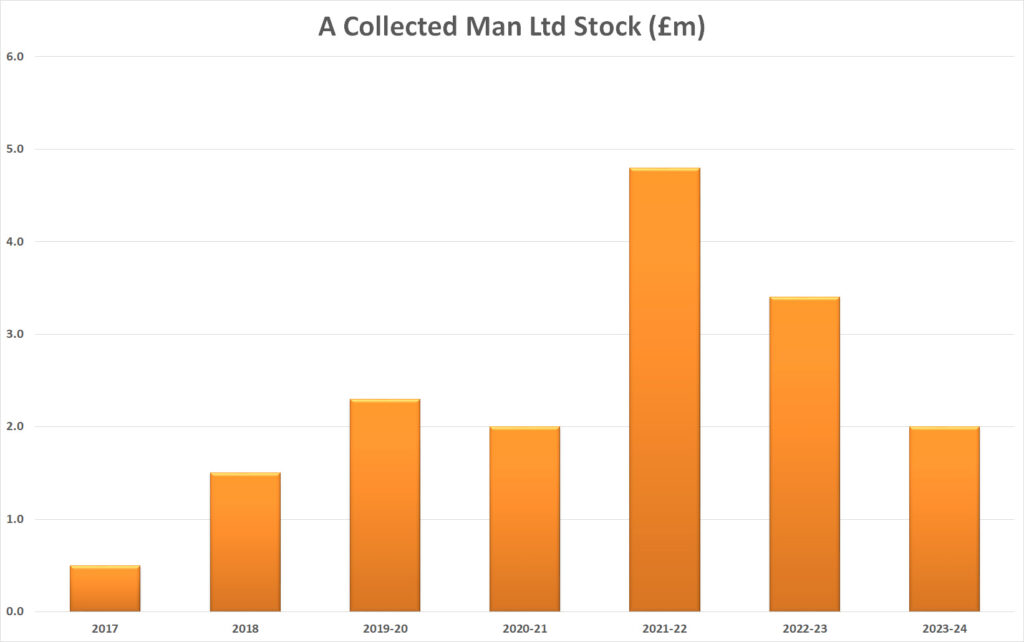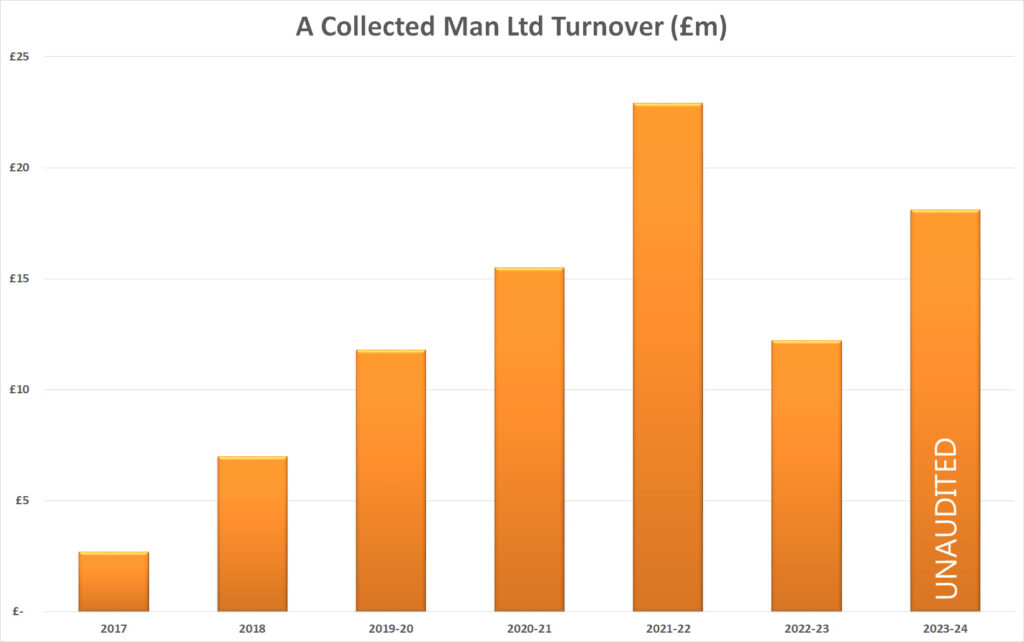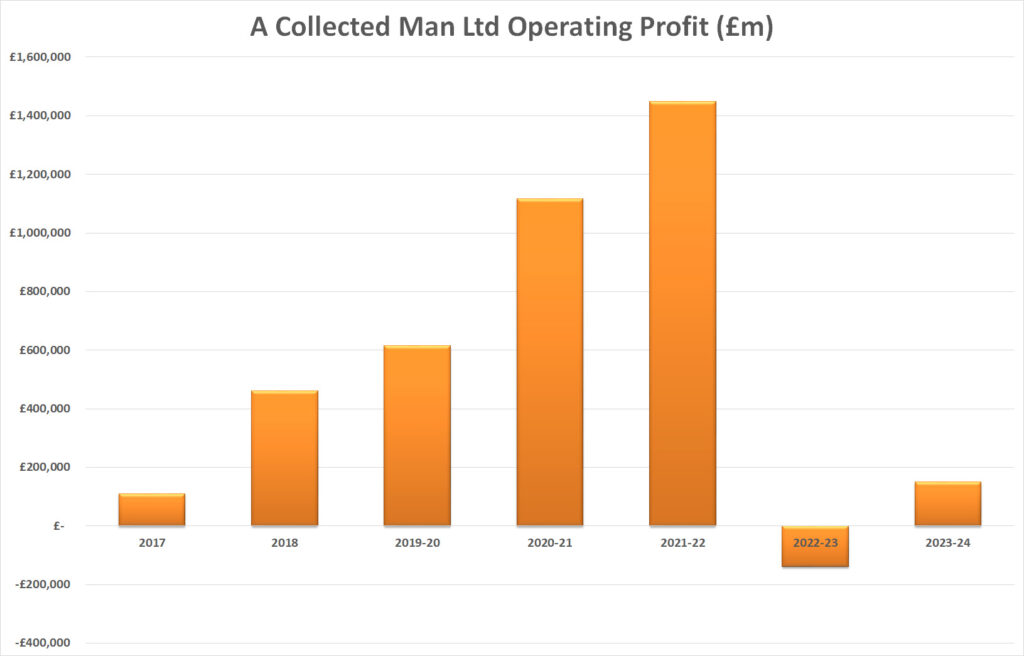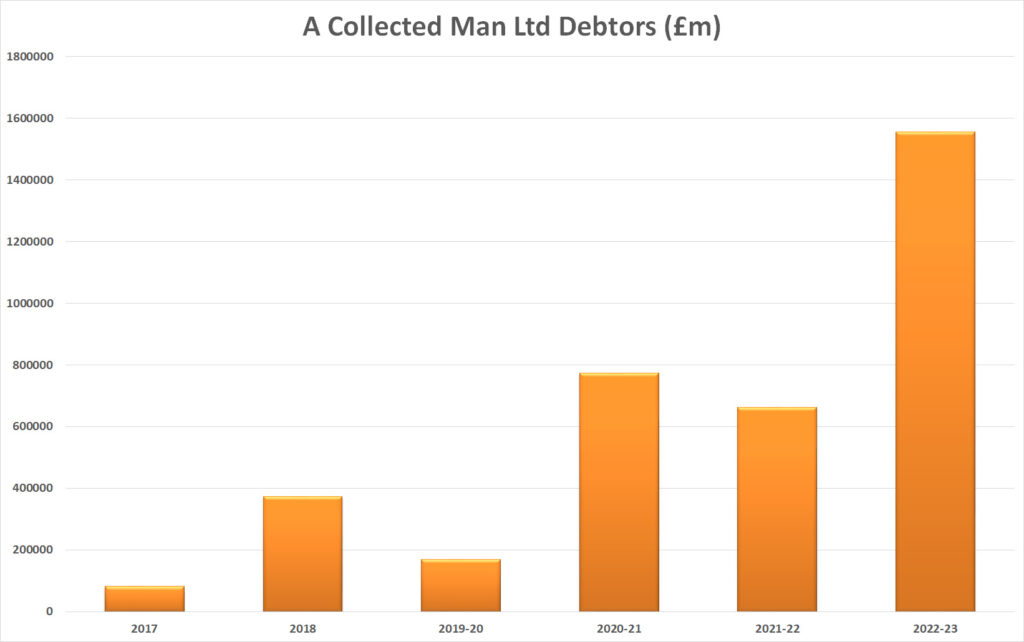“Give me a call when our 2023 accounts are published and I will talk you through the changes we have made since,” urged Silas Walton, founder of A Collected Man, which specialises in trading some of the rarest second hand watches in the world from the likes of Roger Smith, Philippe Dufour, Kari Voutillainen and Rexhep Rexhepi.
WatchPro was happy to agree and caught up with the entrepreneur this week to learn of a remarkable turnaround since sales dropped from almost £23 million in 2021-22 to £12.2 million in 2022-23, the year in which prices for the hottest pre-owned watches slumped and the market froze.
Operating profits reversed from almost £1.5 million in the year to March 2022 to a loss of £139,000 12 months later.
A Collected Man was not alone in enduring a troubling financial year as the pre-owned price bubble burst in the spring of 2022.
Watchfinder & Co., Britain’s biggest pre-owned watch specialist saw turnover drop by 19.3% for the 2022-23 financial year and a £2 million operating profit the prior year turned into a £12 million loss.
A Collected Man and Watchfinder specialise in different part of the market. Watchfinder is a comparatively high volume, fast-turning business that makes most of its money buying and selling the most popular models from Rolex and currently has over 3,400 watches for sale on its UK site with the majority priced at under £10,000.
Until it launched a marketplace last year, the company bought, refurbished and resold every watch on its site and issued its own warranties for each piece.
A Collected Man focuses on the ultra rare watches of the independents or hard to find references from the more industrial brands. It currently has 69 watches, available to buy now, on its site, only six of which are priced at under £25,000.
Initially, it followed the Watchfinder path of buying every watch it went on to sell, with the value of its stock rising from under £500,000 in 2017 to almost £5 million in 2021-22.

The price correction of 2022 not only reduced the value of the company’s existing stock, it also prompted Mr Walton to pivot towards selling watches on consignment, where watches are advertised and sold on behalf of an owner, with A Collected Man taking a commission if they sell.
Margins are lower on consignment, but it does not tie up cash, which was important when the market seized-up in 2022.
It is worth remembering what actually happened in the spring of 2022. Prices for watches with the longest waiting lists had been soaring for 18 months as money flooded into the market (much of it from crypto profits) and flippers proliferated to profit from the surge.
Much of the momentum was driven from these flippers, and more established traders, selling to each other for incremental bumps in prices. Buy a £10,000 Rolex Submariner today and sell it for £10,500 tomorrow was the way.
At the same time as these unicorn watches went on their meteoric rise, independent watchmakers were having their own moment.
Lock downs and travel restrictions meant wealthy individuals diverted spending that might have gone on holidays or Michelin-star meals out to hard luxury goods.
They quickly worked their way through the biggest brands and expanded their collecting horizons to much rarer watches from a generation of living artisan watchmakers: F.P. Journe was an early leader, but a rising tide floated the boats of MB&F, H. Moser & Cie, Czapek and Laurent Ferrier and, at the apex of the haute horlogerie pyramid, the likes of Philippe Dufour and Roger Smith, which make a tiny number of watches per year by hand.
Every watch auction was setting new records for the rarest and most desirable of the timepieces from these indies and A Collected Man found itself in an unimaginably buoyant market for its top end timepieces.
A sign of how successful Mr Walton had become at sourcing the most valuable timepieces and selling them to a close circle of ultra high net worth individuals came in August 2021 when A Collected Man set a new world record price for an independent’s timepiece with the sale of a Philippe Dufour Grande et Petite Sonnerie watch for $7.63 million (£5 million).

That single sale was so big you could almost see it from space. You can certainly see it in the sales figures for the company’s accounts for that year, which were up from £15.5 million to £22.9 million.
It also led to A Collected Man’s highest operating profit of almost £1.5 million.

It would be hard not to get giddy at the headlines that the Philippe Dufour sale generated and the stratospheric growth of the company.
Mr Walton was acutely aware that the boom could not last forever, but it is as hard to call the top of a market as it is to call its bottom, and every day seemed to bring new opportunities to expand.
The British government took some of the heat out of the pre-owned market with two changes to the way VAT is charged in 2021. First, the European Union’s Margin Scheme was dropped. This scheme meant that 20% VAT was only charged on the difference in the price between what a trader paid for a watch and what they sold it for. In other words, VAT was only liable on the profit, not the full value of a watch.
The Margin Scheme was dropped in the UK as part of the country’s break from the European Union, but remained in place on the Continent, so British dealers became uncompetitive.
Ending instant VAT rebates for visitors to the UK, the so-called tourist tax, did not help either.
A Collected Man was largely unaffected by the tax changes because it does the majority of its business outside the UK. America is by far its largest market, according to Mr Walton, with Southeast Asia and, increasingly, the Middle East growing in importance.
“The Middle East is really interesting right now. There is a huge uptick in knowledge and passion for independent watchmakers,” Mr Walton says. “We are seeing in the Middle East what we saw in the United States five years ago,” he adds.
As A Collected Man’s annus horribilis in FY22 closed, Mr Walton took soundings from his most trusted advisers, some of them investors, others clients and suppliers, and then decamped to France to consider his next steps.
“I went completely off grid for two weeks to think about where I wanted to take the company next,” he describes.
His conclusion was to double-down on the rarest of the rare; the absolute apex of the watchmakers’ pyramid. The company would likely sell fewer watches to a smaller, even more exclusive, circle of clients, but at considerably higher average prices.
He would steer the company away from the lower margin, higher volume brands where competition is most fierce and prices were still falling, and concentrate on watches that are so desirable by the world’s leading collectors that they would become part of A Collected Man’s universe just to get access to the watches.
“These are people with deep knowledge of the watchmakers and their watches. The relationships we have with them are more about sourcing inaccessible watches and that makes them less about price,” Mr Walton explains.
A virtuous circle develops where, because A Collected Man has a reputation for its expertise in certain independent watchmakers, it attracts the biggest spending collectors, which in turn encourages more brands and individuals to do business with the company.
“We want the top indies to work with us because of the value we bring. We aim to be demonstrably better at working with a narrow, but super-deep cohort of clients and watchmakers,” Mr Walton suggests.
A Collected Man is reducing consignment as a percentage of its deals, and focusing increasingly on buying the best possible watches and finding customers for them.
It is also an authorised dealer for a small number of independent brands including Akrivia and Petermann Bédat, which gives the company access to brand new watches.
A Collected Man’s FY24 ended in March, and unaudited accounts, shared with WatchPro, show the company bouncing back to generate sales of £18.1 million and a small operating profit.
If you extract the world record Philippe Dufour deal from 2021, the past year was A Collected Man’s best yet from its core business.
The company has also been paying down debt over the past year, which had ballooned to almost £1.6 million in the 2022-23 financial year, but is expected to be down to net zero by the end of 2024.

Mr Walton always had a relaxed air, even during the downturn, but he seems positively glowing at the turnaround he has achieved.
Now he is setting his sights on even greater success, which he hopes will be accelerated with a round of fundraising next year.
New funds, coupled with a dramatically better cash flow position, will position A Collected Man for its next phase, which is a return to the higher margin buying and selling of the most exceptional watches on the planet. “We don’t need to raise funds for the day-to-day running of the business, but we want to be in a position where we can go for some incredible pieces on behalf of our clients without worrying too much about the financial risk,” Mr Walton explains. He would not provide any further details about the timing and scale of the raise.
Mr Walton and his team enter the next phase leaner, battle-hardened after experiencing the first major downturn of their young lives, and more focused than ever on doing one thing — trading in the rarest of collectible watches — better than any of its competitors.
“Looking back, we are proud of what we managed. We had to take some tough and scary decisions. There could be no more sacred cows. We need to be really focused on being really, really good at one thing,” he concludes.

